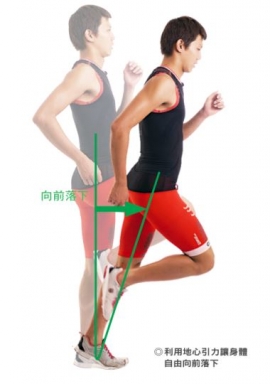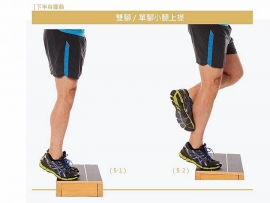" If your schedule does not allow time for proper warm-up, it does not allow time for training at all. “
再来复习一下暖身的二个主要目的:
First, warm-ups actually make the soft tissue – the muscles and tendons, and the ligaments that comprise the joints – warmer.
(首先是暖活组软组织,像是肌肉、肌腱与韧带。)
General warm-up exercise increase the temperature in the soft tissue and mobilize the synovial fluid in the joints. These exercises include walking fast or jogging, riding an exercise bike ( a better method), or using a rowing machine (the best method, due to its range of motion and the full involvement of the back and arms as well as the legs.)
(利用一般性的暖身运动来增加软组织的温度及并增加关节中滑膜液(Synovial Fluid)的流动。暖身的动作像是快走、慢跑或是原地脚踏车或是划船机(Rowing Machines)。原地脚踏车是一个不错的选择,因为进行时提供膝盖更大活动范围的参与,对于深蹲训练的准备是相当好的暖身。然而,划船机是最好的选择,因为它在进行时,提供给背部、手肘与腿部全活动范围的参与。)
Specific warm-ups, like the empty-bar sets of the barbell exercise itself, also serve to warm, mobilize, and stretch the specific tissue involved in the particular movement. This step is important for injury prevention, since it is more difficult to injure a warm body than a cold one.
(针对性的暖身动作,像是以空杠来进行训练动作,针对所要利用的软组织其行暖身、活动与伸展。这个动作对于防止受伤来说非常重要,因为温度的身体比起冰冷的身体更难受伤。)
软组织温度的提高非常的重要,随着你在室内/室外、夏天/冬天、年纪、受伤等状况而所调整与注意。在空调/冷气房、冬天、在癒合的受伤下、年纪大等,需要花更长的时间来进行暖身准备。
而针对性的暖身动作(Specific warm-ups)对于杠铃训练尤其重要:
It allows you to practice the movement before the weight gets heavy. Light warm-up sets, done first with the empty bar and then progressively heavier until the work sets are loaded, prepare the movement pattern itself so that when the weight gets heavy, you can focus your attention on pushing hard instead of worrying about how to push.
(它予许你在进行更高重量前,先练习动作的技巧。先从空杠暖身,然后慢慢增加重量,直到你要训练的重量。当你准备好动作模式之后,在进行更高重量时,你可以更注意于推,而不用顾虑到如何推。)
The motor pathway – the neuromuscular adaptation to a complicated movement pattern – must be prepared every time it is used, whether you’re throwing a baseball or doing a squat. The more familiar the movement pattern, the less critical this aspect of warm-up becomes, but for a novice it is always very important. The warm-up sets prepare the motor pathway at the same time that they prepare the tissues for the upcoming heavier work.
(“运动神经路径(Motor Pathway)-对于复杂动作模式的 神经肌肉适应”一定要在每一次的使用时预备好,不管是丢棒球或是进行深蹲。对动作模式愈熟悉,暖身会变得愈不关键。但对于初学者来说,暖身始终是非常重要的。暖身组在准备软组织负荷更高的重量,同时也在为运动神经路径作准备。)
While you are doing the first sets, you can address and fix form errors so that during your work sets, you can focus more on driving the load and less on maintaining correct form.
(在你进行暖身组时,你可以调整并且修正有误的姿势,而当你进到训练时,你能更专注在重量上,而减少维持正确姿势的心思。)
暖身,非常重要,请记住一个忠告:
If your schedule does not allow time for proper warm-up, it does not allow time for training at all.
(若你没有时间安排进行暖身,代表时间不予许你进行训练)。
较好的方式是从训练的菜单中,忽略肌力训练这个项目,以避免无可挽回的受伤发生。而暖身组要进行几组呢?
It should be carefully and thoroughly prepared with a couple of empty-bar sets, and then as many as five sets between those and the work sets.
(应该仔细与彻底的准备一组空杠,然后在和训练组(Work Sets)之间进行多达5组的暖身。)
什么是“训练组(Work Sets)”跟“暖身组(Warm-up Sets)”有什么差别呢?
A work set is the heaviest weight to be done in a given workout, the sets that actually produce the stress which causes the adaptation. Warm-ups are the lighter sets done before the work sets.
(训练组是你要进行训练中最重的重量,这个组数实际上带给你成长调适的压力。而暖身组是在进行训练组前较轻的组数。)
The work sets are the ones that provide the training effect; they are the sets that make strength go up, since they are the heaviest – for novices, the weight you haven’t done before.
(训练组提供训练的效果,让你肌力获得成长,而对于初学者来说,这个重量是你之前从未做过的。)
以下有一个范例,一般来说,会以空杠开始进行(45磅/20公斤),然后依训练组目标重量来调整暖身组各阶段重量,渐进式的增加重量。暖身组的最后一组不会选择与训练操的重量太接近,因为这会影响到训练组的操作,至于要设定多少呢?依照每个人的喜好、技巧与经验而定啰。
书中谈到一个老式的训练方式“金字塔型(The Pyramid)”,以卧推来说,训练内容会是:
135 x 10, 155 x 8, 175 x 6, 185 x 5, 195 x4, 205 x 3, 215 x 2, and 225 x 1
当你做完全部的组数之后,也许你会觉得相当的棒。但问题是你在进行225磅的重量之前,你已经进行了6390磅的重量,还剩下多少力量来进行225磅的训练呢?“暖身组”进行的太多,让你感到疲劳,而不是为训练组进行准备,肌力也因此不会获得进步。
从空杠到较重的重量进行暖身的过程,组与组之间的休息会增加。一般来说,时间是足够你从上一组的训练中得到恢复,让上一组所产生的疲劳不影响到现在这一组的进行。我们的训练内容是要你完成每个组数的次数,能在每个训练中挺举更高的重量,而不是跟“时间”竞赛。
A Strength training program is designed to make you stronger, i.e., able to exert more force and lift more weight. Some training programs used in bodybuilding rely on the accumulated fatigue produced by short breaks between sets, and these programs specially increase muscular endurance. Although endurance increases as a function of strength, it is not a parameter specially targeted by out program at the novice level.
(肌力训练菜单的设计是要你变的更强壮,能够输出更大的力量、举起更重的重量。一些健美选手会依赖在组数间的短时间所累积的疲劳感来增加其肌耐力。虽然耐力也会增加肌力的功能,但这不是我们针对初学者设计菜单时所考量的。)
You will benefit more by lifting heavier weights through the efficient timing of sets to allow for recovery, than by trying to decrease the time between the sets and thereby allowing fatigue to limit your ability to exert maximum force.
(藉由组数间有足够而有效的恢复时间,你会从举起更重的重量中获得成长。)
休息的时间依照你的体能状况、技术、重量等而有所不同。以初学者来说,因为重量不足以让他们产生过大的疲劳感,休息时间可能1~2分钟,以进阶的训练者可能需要更长的时间。
文章来源:山姆伯伯工作坊



